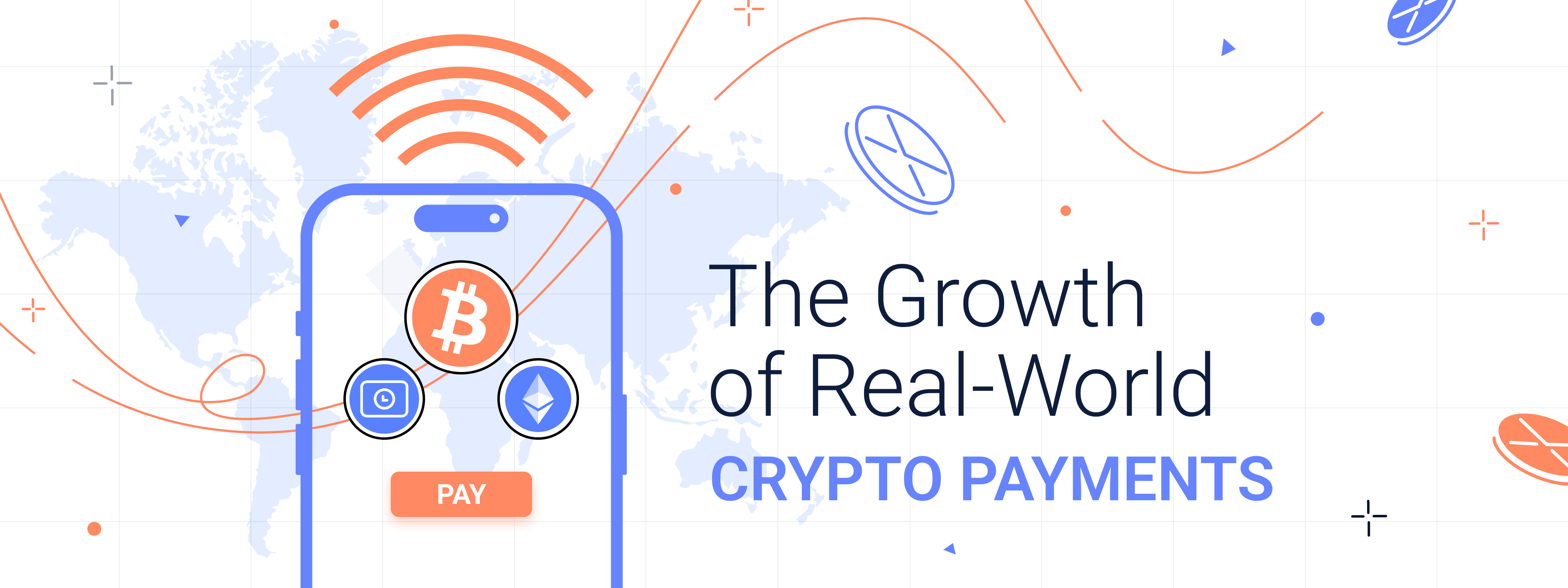Given that Bitcoin was conceived as a form of peer-to-peer electronic cash, relatively little payment activity has taken place in the real world, for physical goods and services. There are good reasons for this, but equally, a number of factors that mean this picture is now starting to change. More and more real-world transactions are taking place with bitcoin and other cryptocurrencies, due both to its widespread adoption and the advantages that digital cash offers over legacy payments.
The Changing Use Cases Of Crypto
Satoshi Nakamoto launched Bitcoin as P2P money, and its most celebrated transaction was the purchase of two pizzas for 10,000 BTC back in May 2010 – an event now remembered as ‘Bitcoin Pizza Day’. BTC quickly gained traction as an online currency – albeit on the Silk Road and other darkweb platforms. However, the shortcomings of bitcoin payments for this use case quickly became apparent, as the transparency of the blockchain meant criminal transactions could be traced with relative ease.
Instead, the narrative shifted. Bitcoin became popular as a speculative asset, as the rapid growth in user numbers saw its price soar. In other settings, it was Bitcoin’s openness as well as limited supply that proved attractive. In countries where the value of the national currency was being eroded by hyperinflation, or where the payments system was broken due to banking failures, bitcoin became a lifeline as a replacement for fiat. Venezuela, Argentina, Lebanon and numerous others saw crypto gain popularity for this reason.
Physical Payments
As crypto has moved from the shadows and the corners of the internet into the mainstream, more progress has been made to integrate it into TradFi payments systems. This is partly down to its popularity – the more people use crypto, the more worthwhile it is for companies to target that demographic and put the work in to facilitate crypto payments – and partly down to infrastructure. Unlike the situation when Laszlo Hanyecz bought his pizzas in 2010, it’s now possible to make BTC payments via a range of plugins and other seamless solutions, without having to worry about volatility or currency conversion rates.
Binance Pay
Due to the complexity and costs of creating physical payment solutions, the infrastructure for connecting the blockchain world with bricks-and-mortar retailers has largely been built by the giants of the crypto and TradFi space. For example, Binance Pay, the payments arm of the world’s largest crypto exchange, recently established a partnership with French payments provider Ingenico that will enable customers to pay for goods and services in crypto.
Ingenico is one of the largest point-of-sale terminal providers in Europe, and created the popular iPP 350 card terminal. Stores that already use the terminal will be able to accept payments in over 50 cryptocurrencies, and Binance users who keep funds on the exchange will be able to use them to buy goods, with conversion rates calculated automatically.
Even Faster Food
These large-scale infrastructure services are enabling smaller merchants and stores to plug into the blockchain world and receive crypto payments quickly, conveniently, and securely. The Belgian branch of Black & White Burger, a well-known French fast food chain, recently announced it would be accepting crypto payments in all its stores.
What’s interesting about this episode is the timing. Crypto is still suffering from reputational damage following the 2022 bear market, though the new EU-wide MiCA legislation has provided some clarity and legitimacy to the industry. Black & White have positioned themselves as a crypto-friendly outlet early in the market cycle, and will doubtless benefit in the coming months and years. Their move is a good example of retailers using crypto to accept small purchases of just a few dollars for everyday purchases, giving customers another option for payments at a time when fewer people carry cash – while recognising that crypto adoption is on the rise.
Another European organisation that has embraced crypto payments is Apsys, a real estate company that manages and develops retail parks throughout France and Poland. The initiative uses Lyzi, a popular mobile crypto payment app. Customers buy crypto gift cards with their crypto using Lyzi, which they can then spend at restaurants and outlets. When the cards are used at point-of-sale terminals, Lyzi converts the crypto to fiat. A system of loyalty points and bonuses will help incentivise crypto usage.
Hospitals, Hotels, Tourism…
In Europe, crypto adoption is driven by evolving legislation and a desire to tap into a fast-moving and exciting new market, which appeals to the important young and tech-savvy demographic. In other parts of the world, the growth in crypto payments has accelerated thanks to the role that crypto plays as a hedge against inflation.
This is particularly true of Latin America, where a number of countries have suffered from serious inflation over the past few decades – with some seeing their currencies all but collapse.
Brazil’s inflation is currently under control, and no worse than in most major European economies, but within living memory it was up in the thousands of percent and the population has a natural wariness of it happening again. Bitcoin is popular in Brazil, as well as in Venezuela, Argentina, and other countries where hyperinflation is an immediate threat.
In a first for the country, the Rolante Hospital Foundation (FHR), a large general hospital and the oldest hospital in the municipality of Rolante, will start accepting crypto from patients who need to settle their medical bills and buy medicine. Rolante is already a major crypto adoption hub; other organisations including hotels, tourist venues and sporting companies in Rolante accept bitcoin and other crypto tokens as payment.
These are just some of the latest examples of crypto being integrated with real-world payment services, enabling crypto users around the world to spend digital assets as cash – as they were always meant to be used. As crypto payments are normalised in this way, the costs and risks for organisations adding the option of using crypto are reduced.


